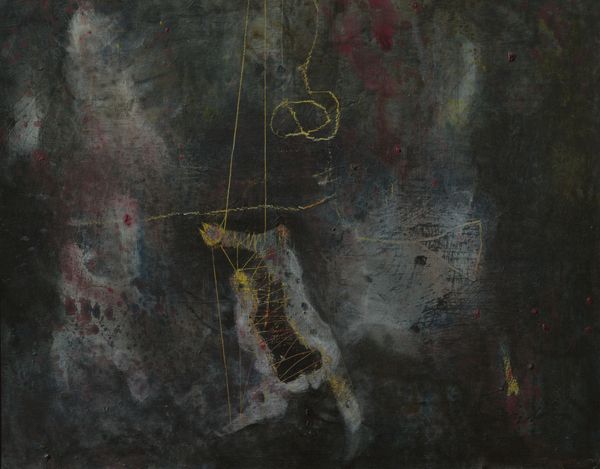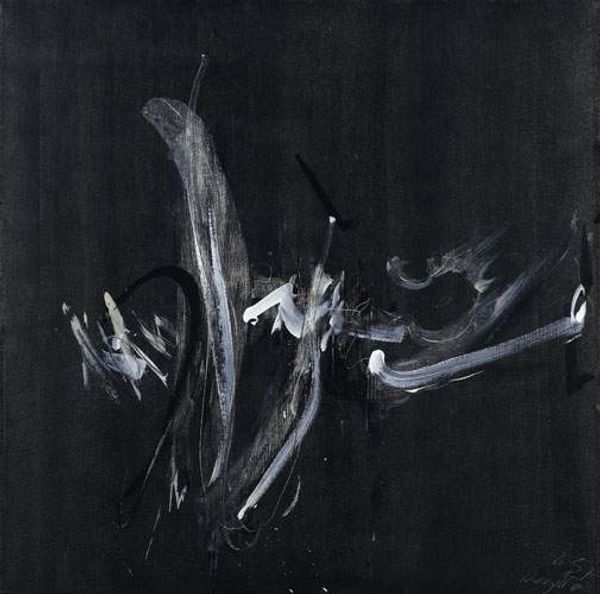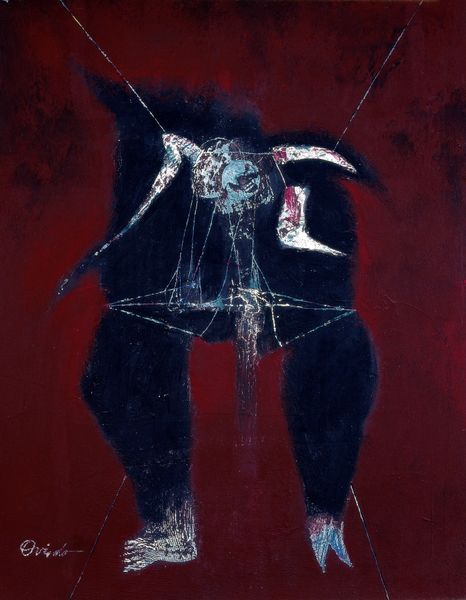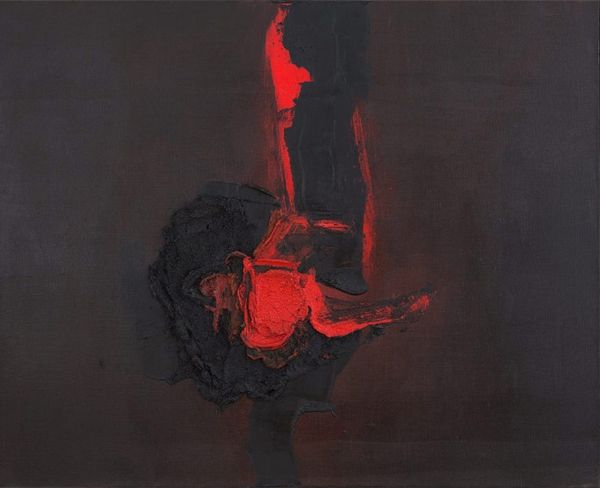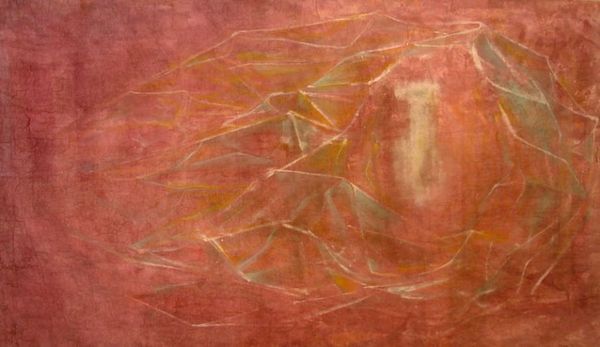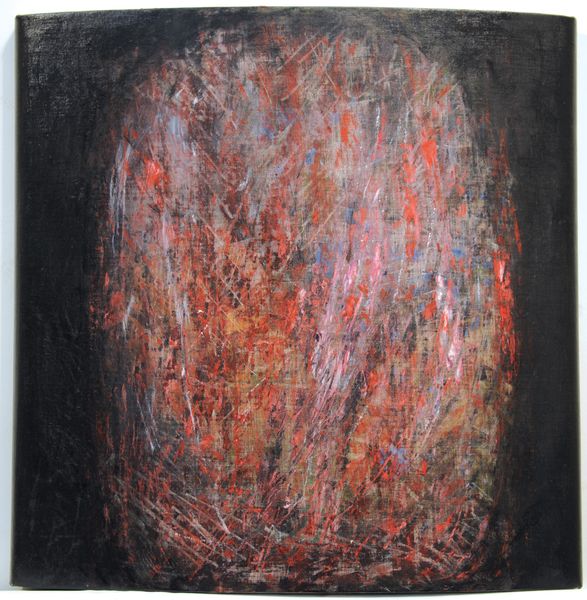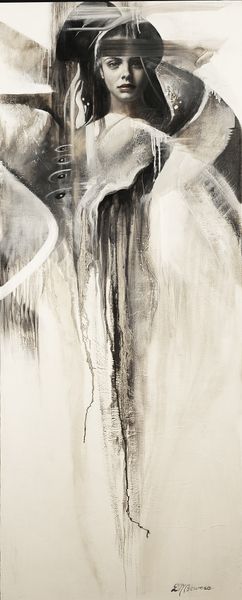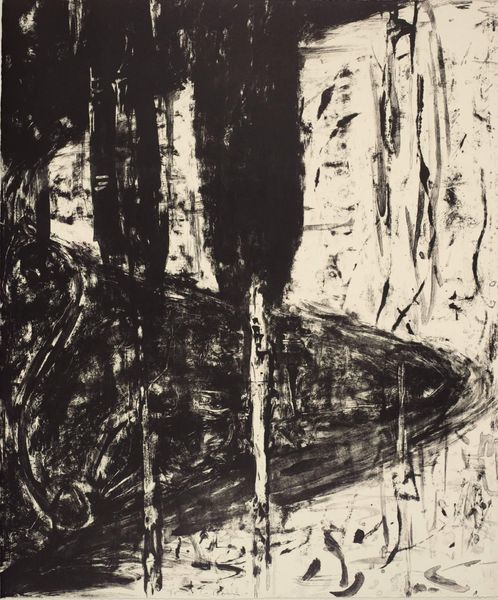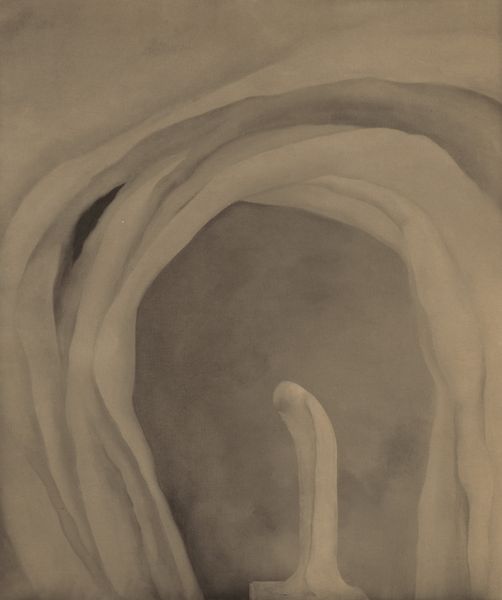
Copyright: Rene Duvillier,Fair Use
Editor: Right next to us is René Duvillier's "Rheia la titanide" from 1988, a powerful abstract expressionist painting created with oil and acrylic paint. I am immediately drawn to its somber, almost claustrophobic mood, heightened by the dominant dark tones. How would you interpret its stark visual language? Curator: It's fascinating how Duvillier uses abstraction to evoke Rheia, the Titaness, mother of the Olympian gods. Neo-expressionism, especially in the late 80s, was reacting against the coldness of minimalism and conceptual art. There was a resurgence of interest in mythology and the raw emotionality of the human figure, albeit often deconstructed. Does this feel like a representation of a powerful, maternal figure, or something else? Editor: I can see that, the power for sure, but there’s also a sense of vulnerability within those sharp lines and enclosed space. Almost like she's trapped. Curator: Exactly. The socio-political climate of the late 20th century deeply influenced artistic production. Consider the rise of feminist art critiquing the patriarchal structures that confine women, even goddesses. Perhaps Duvillier is subtly commenting on the constraints placed upon even the most powerful female figures in mythology. Editor: That's a perspective I hadn't considered. So, even an abstract work like this can be deeply engaged in cultural commentary? Curator: Absolutely. Art rarely exists in a vacuum. Museums and galleries actively shape the narrative around these works, further influencing how we understand their social and political relevance. This painting, therefore, participates in an ongoing dialogue about power, representation, and gender roles. Editor: That's so interesting to think about how cultural forces shape the work. I’ll definitely remember that next time I'm in a gallery! Curator: It's all about considering the broader conversation surrounding the artwork. Context truly is key.
Comments
No comments
Be the first to comment and join the conversation on the ultimate creative platform.
